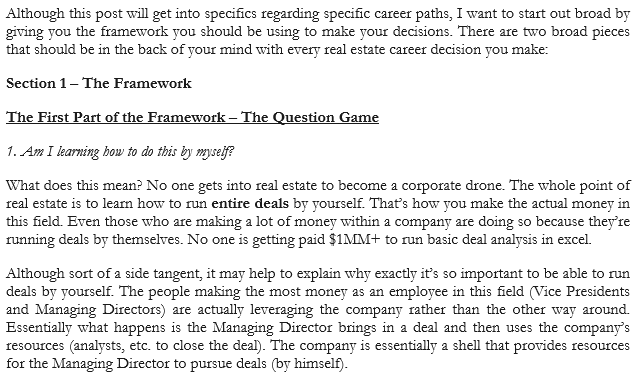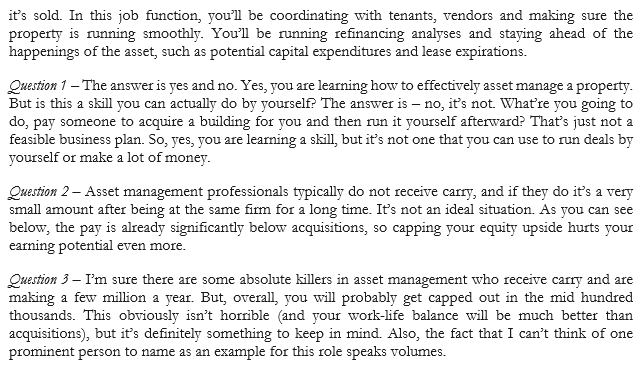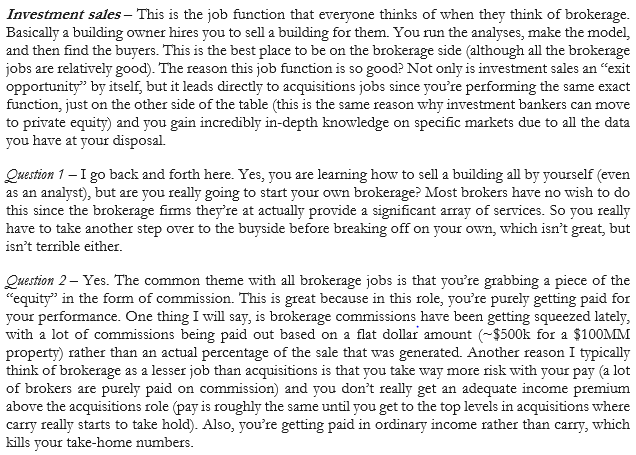
Got some questions regarding the flow of funds in an RE deal
The flow of funds is actually determined by the lender, which is provided in loan docs. Then, the operating agreement will have a separate FOF afterward for "excess" funds
Lender FOF on the left, LLC FOF on the right

The flow of funds is actually determined by the lender, which is provided in loan docs. Then, the operating agreement will have a separate FOF afterward for "excess" funds
Lender FOF on the left, LLC FOF on the right


Cash Management typically occurs when a debt covenant has been breached (usually the DSCR or Debt Yield dipping below a required threshold)
Once this occurs, all cash is swept into a "lockbox" controlled by the lender and follows the "lockbox" FOF (rather than the normal FOF)
Once this occurs, all cash is swept into a "lockbox" controlled by the lender and follows the "lockbox" FOF (rather than the normal FOF)
The Cash Management Period can typically be resolved by 2 consecutive calendar quarters above a specific DSCR or Debt Yield threshold, after which time revenue is no longer swept into a lockbox and the normal flow of funds resumes
For what it's worth, the flow of funds has been simplified a lot - there're a lot of other possible fund flows
This chart doesn't address security deposits, casualty/condemnation subaccounts, etc
It can get extremely complex with more sophisticated deals
This chart doesn't address security deposits, casualty/condemnation subaccounts, etc
It can get extremely complex with more sophisticated deals
Additionally, the normal flow of funds (when not in cash management) differs greatly depending on how strict your bank is
Sometimes your bank is extremely lenient and the flow of funds is essentially voluntary
Other times the taxes/insurance/reserves are reserved for you
Sometimes your bank is extremely lenient and the flow of funds is essentially voluntary
Other times the taxes/insurance/reserves are reserved for you
Once the cash reaches the "available cash" box in the diagrams above, it's then subject to the operating agreement, which obviously is under your control - so doesn't *have* to flow the way it does
The right picture shows how the LP/GP "waterfall" is typically structured
The right picture shows how the LP/GP "waterfall" is typically structured
The waterfall structure in the image above is based on a promote waterfall of 20% promote over a 10% return and 30% over a 30% return promote
In the above graphic, the GP is the "General Manager" and the LPs are the "Class B Members"
In the above graphic, the GP is the "General Manager" and the LPs are the "Class B Members"
That's pretty much it - the flow of funds are actually pretty logical
If you're interested in more content like this, sign up for my email list below
mailchi.mp/e4a4254d3361/r…
If you're interested in more content like this, sign up for my email list below
mailchi.mp/e4a4254d3361/r…
• • •
Missing some Tweet in this thread? You can try to
force a refresh















